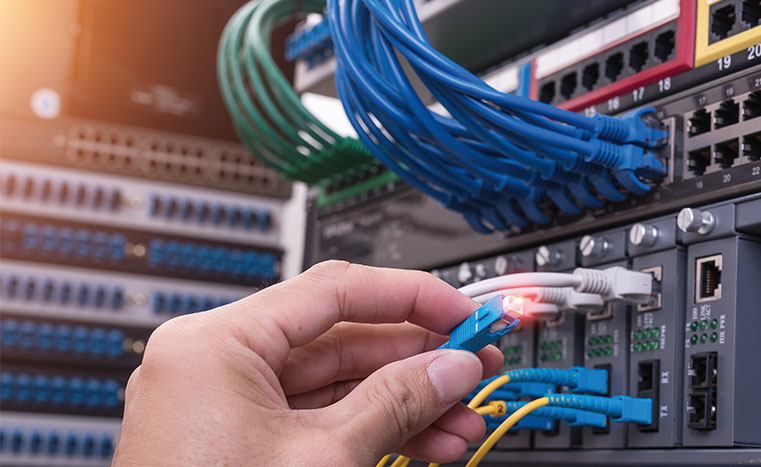Are there alternatives to line certification in the OT environment?
29.09.2020
Checking the functionality of newly laid cables and wires is common practice in both the IT and OT sector. However, cable certification in mechanical and plant engineering has often been critically questioned in the past. But what is the reason for this?
The IT leads the way, the OT follows?
In order to understand the critics of OT management certification better, it is advisable to first take a look at the much older IT area. If, for example, a building is constructed, network lines are usually already permanently installed during the construction phase. Because in most cases these network cables "disappear" into closed cable ducts, they are no longer accessible when the building and thus the network is put into operation. For this reason, certification is carried out immediately after the installation of the cables to ensure their functionality. As the cables are rigidly installed in the building and protected against almost all environmental influences, no further cable testing is necessary. In short: IT cable certification makes perfect sense.
Reflecting this proven procedure on the OT area, clear differences become apparent. In contrast to the IT sector, OT networks are usually commissioned and used immediately after installation. Another essential difference is the way in which lines are laid. All cables must be laid in such a way that they can be replaced as required (e.g. in the case of a retrofit) or flexibly (e.g. in the case of moving plant sections). This means that industrial data cables are not usually located in tightly closed duct shafts or walls. While this makes it easier to repair, OT network cables are exposed to aging due to bending stress, vibrations, lubricants and other environmental influences, which are not usually found in the IT sector.
Cable certification: just a snapshot
A further point of criticism of the line certification in the plant sector is the one-off inspection. The line inspection is only a snapshot at the time of the measurement. There are no reliable indications of the future development of the line quality. Rather, there is a danger of a false sense of security. Especially since the real cabling must be disconnected for certification in order to be able to connect the required measuring device. Faulty locks between connector and socket cannot be detected e.g. when re-connecting.
It won't work without line testing
Nevertheless, it is still necessary to check the network cables. The enormous error potential of defective connectors becomes clear, for example, in this year's VORTEX Report. In about every fifth measurement application, faulty plug connections were part or main cause of the plant malfunction.
A one-time line certification does not offer sufficient security - despite the relatively high certification effort. For this reason, an uncomplicated and permanent control of the line routes is recommended. However, in order to reduce personnel costs and maintenance-related downtimes (e.g. for manual line inspection), the implementation of line monitoring in permanently installed infrastructure components is the most practical solution. Switches, such as the PROmesh P10, are particularly suitable for this. Thanks to their central role as data crossover, Industrial Switches are the ideal network component for automatically testing and monitoring connected lines.
Online line diagnosis: alternative with added value
The example of the PROmesh P10, a PROFINET/Ethernet switch of the latest generation, shows the way. Equipped with innovative online line diagnostics, it tests and monitors connected lines, including plug connectors, during operation. Without separate, manual work steps, the status of the data line and the transmission quality can be checked at any time. In short: data lines can be replaced in a targeted manner due to wear and tear. This reduces maintenance costs and avoids the unnecessary replacement of lines that are still functional. At the same time, the complete control of the transmission quality increases the reliability of the network and thus of all processes running on it. All this speeds up the commissioning of new systems, the measurement-based control of replaced lines and all associated maintenance tasks.
Author: Felix Beyer